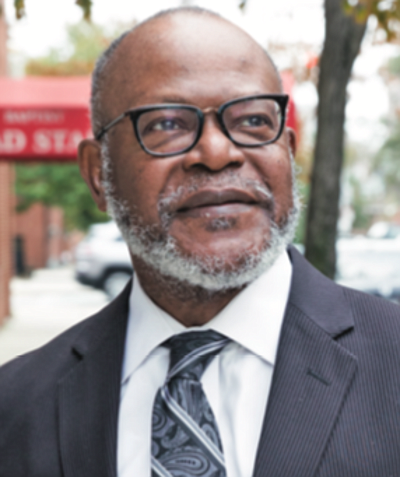I remember my late mother, a graduate of Shaw University, Mary Beasley Hathaway, saying to me, “you don’t see the forest for the trees.” The saying was meant to communicate that every now and then you have to step back and take a macro view of a situation. I’m sharing this saying as a way of presenting my perspective on the “defund the police” movement.
We have to examine rightly the priorities and allocations of a $577,000.00 plus budget of the Baltimore City Police Department, a budget that takes a significant percentage of Baltimore City’s overall budget.
While I agree the budget needs to be reallocated. I see simply looking at the budget of the Baltimore City Police Department as the proverbial looking at the “trees instead of the forest.”
It’s become a social justice issue to focus upon the Police Department. The treatment of people of color by the hands of the police force merits Federal Court monitoring its operations and mandating change in its practices and policies. I can understand the emotional and substantial rational for defunding a police department that possibly causes more harm than good within the Black Community.
Let me give some context, Dr. Karl Alexander of Johns Hopkins University, a researcher, conducted a longitudinal study of 790 youth for 25 years who lived within Penrose-Fayette, west side of Monroe, and Franklin Square on the east. He studied those youth from age three until age 28. His findings are published in the book, “Long Shadows.”
This is a summary of the findings: “Almost half stayed at the same economic level as their parents; only 33 children moved from low-income to high income bracket; only four percent from low income families had a college degree; while 45 percent of the children from higher income families earned a degree; White men from low-income backgrounds found high-paying jobs; at age 28, 45 percent of the Whites were working in construction trades and industrial crafts, compared with 15 percent of Black men and virtually no women; White women from low-income backgrounds benefit financially from marriage and stable live-in partnerships; and at age 28, 41 percent of the White men and 49 percent of the Black men from low-income backgrounds had a criminal conviction, but the White employment rate was much higher.”
The reason I point you to the Long Shadow’s study is to highlight the fact that by simply focusing upon “defunding the police department” you are only looking at the trees.
The forest is the total budgets of three key operations in Baltimore City— Baltimore City Government; Baltimore City Public School System; and Baltimore City Department of Social Services. These three entities have a consolidated budget of over $6 Billion per year. Using simplistic math and not accounting for adjustments and fluctuations over a 25 year period, the total consolidated expenditures of those three entities would be over $1 Trillion Five Hundred Million.
This is the forest we must see!
By doing business as usual the Long Study results are the outcomes we achieve. We need to do something radically different to change the outcomes of children and youth growing up in Baltimore’s low-income communities.
Simply demanding “defund the police department” without a comprehensive strategy for these three essential budget expenditures and projecting their investment over the life cycle of our city’s youth will doom future generations to the pot holes of rejection and low expectation.
It’s a tragedy that children of low- income families remain low income. Each generation should build upon the other and our public budgeting expenditures should provide our children and families a ladder to success.
If the results of the Democratic primary hold true we will have elected a generation of city-wide leaders: Mayor, President of the City Council and Comptroller who can guide our City for the next 20-24 years.
Our planning and budgeting process should reflect that possibility and be more strategic. Everyone understands that investment in human productivity, education, workforce development better health outcomes and quality housing will provide the masses of people with a better quality of life.
Business management and organizational development professional would share with you that our Japanese counterparts plan in hundred year cycles. This thinking creates within those organizations the mindset to project over a longer period of time and out performs those organizations with a shorter planning cycle.
Instead of each department or agency coming before the City Council and the Mayor and presenting their annual budgets for review, let us engage the residents of Baltimore City in the budgeting process and state clearly that we are at this particular juncture and we are getting these particular outcomes. Then ask what outcomes we wish to achieve over a 20-year period? And present budgets within a 20-24 year context where each year we are making the strategic investments in improving the quality of life of the persons living in Baltimore.
You may say that’s wishful thinking.
I would respond it’s “forest view thinking.” We can no longer afford “tree view thinking.” We need leaders who are willing to climb the mountaintop and think at the level of the timberline. That, as Dr. Howard Thurman would say is “the line where the tips of the trees in the forest touch the mind and hand of God.”
Dr. Al Hathaway serves as the Senior Pastor of Union Baptist Church located at 1219 Druid Hill Avenue in Baltimore City.
